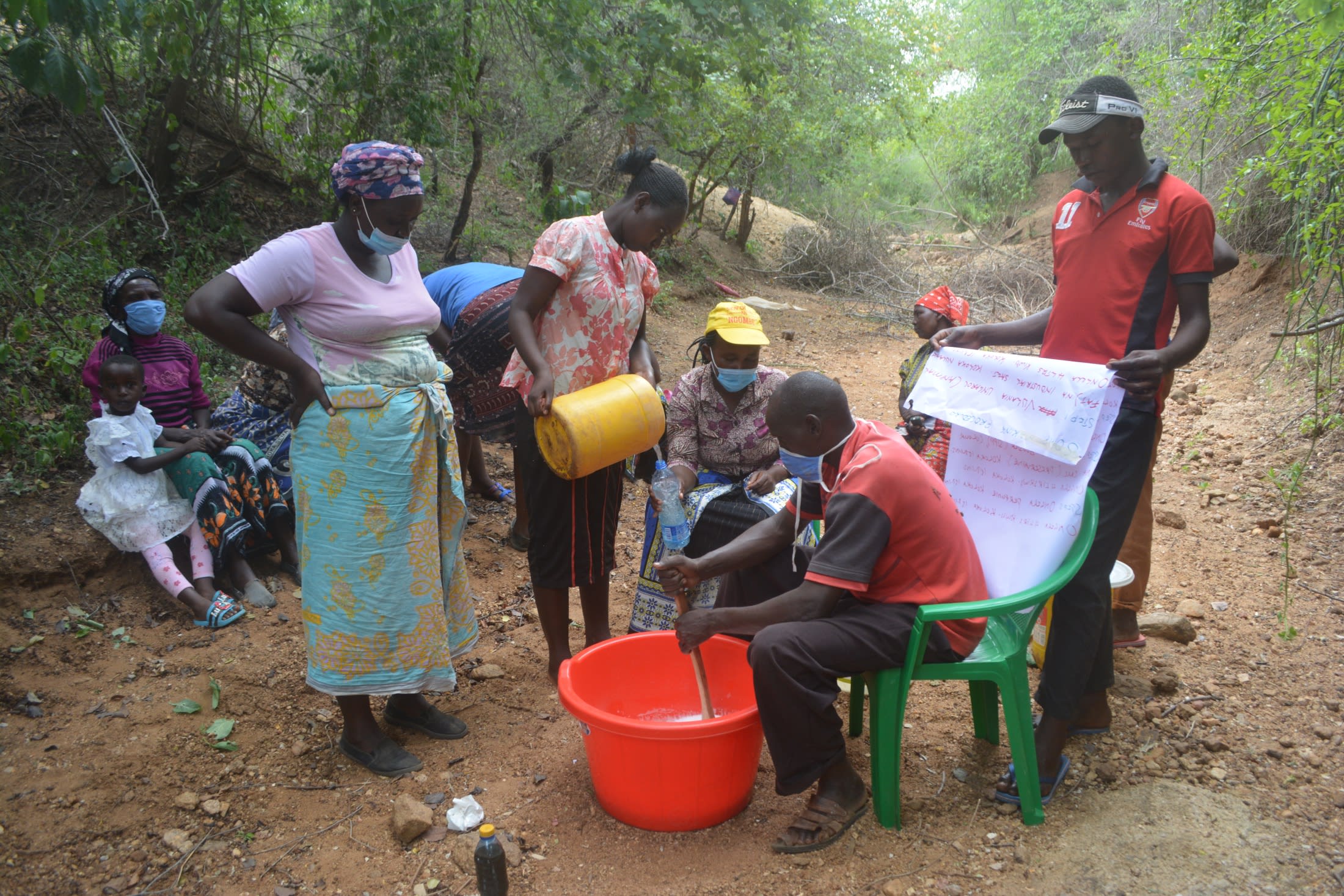Kathamba ngii Community is found in a rural, peaceful area that has an average vegetation coverage of mainly indigenous trees. Most of the buildings here are made of bricks and covered with iron sheet roofing.
On a typical day, community members here wake up very early to fetch water and complete chores before working on their farms or as casual laborers for others. But it is the first task that defines the rest of their daily routine; accessing water is a challenge in this semi-arid region of Kenya.
"Our area suffers a long dry season every year. In such times, the few water points present are unable to meet the water demands of the existing population," explained Beatrice Mwikali.
Our main entry point into Kathamba ngii Community is the Kwa Mbunza Self-Help Group, which is comprised of households that are working together to address water and food scarcity in their region. These members will be our hands and feet in both constructing water projects and spreading the message of good hygiene and sanitation to everyone in this area. This is the third project we will complete with this group to improve water access for the more than 2,000 people living here.
Community members living on the edges of the village are still struggling with long distances to access the few water points available. This brings out the need for more water projects near their homes to achieve universal water access to all residents of the locality. We work with groups over multiple years to ensure that everyone has access to safe, reliable water close to home.
"Despite having implemented 2 water projects in our locality, the need for more water is rife because water is such an essential commodity in human life. I come from a bit far from the already-done projects and I have been struggling with the long walks to access water, which derails my personal development since I spend much time in the pursuit of water," said Tabitha Mutheke.
What We Can Do:
Sand Dam
After the community picked the ideal spot, our technical team went in and proved the viability by finding a good foundation of bedrock. Now, our engineers are busy drawing up the blueprints.
We are unified with this community to address the water shortage. As more sand dams are built, the environment will continue to transform. As the sand dams mature and build up more sand, the water tables will rise. Along with this sand dam, a hand-dug well will be installed to give community members an easy, safe way to access that water.
Building this sand dam along with the well in this community will help bring clean water closer to hundreds of people living here.
Training
These community members currently do their best to practice good hygiene and sanitation, but their severe lack of water has been a big hindrance to reaching their fullest potential.
We will hold hygiene and sanitation training sessions with the Kwa Mbunza Self-Help Group and other community members to teach about important hygiene practices and daily habits to establish at the personal, household, and community levels. This training will help to ensure that participants have the knowledge they need to make the most out of their new water point as soon as the water is flowing.
One of the most important topics we plan to cover is the handling, storage, and treatment of water. Having a clean water source will be extremely helpful, but it is useless if water gets contaminated by the time it is consumed. We will also emphasize the importance of handwashing.
We and the community strongly believe that all of these components will work together to improve living standards here, which will help to unlock the potential for these community members to live better, healthier lives.
We typically work with self-help groups for 3 to 5 years on multiple water projects. We will conduct follow-up visits and refresher trainings during this period and remain in contact with the group after all of the projects are completed to support their efforts to improve sanitation and hygiene.

 Sand Dam
Sand Dam
 Rehabilitation Project
Rehabilitation Project



























